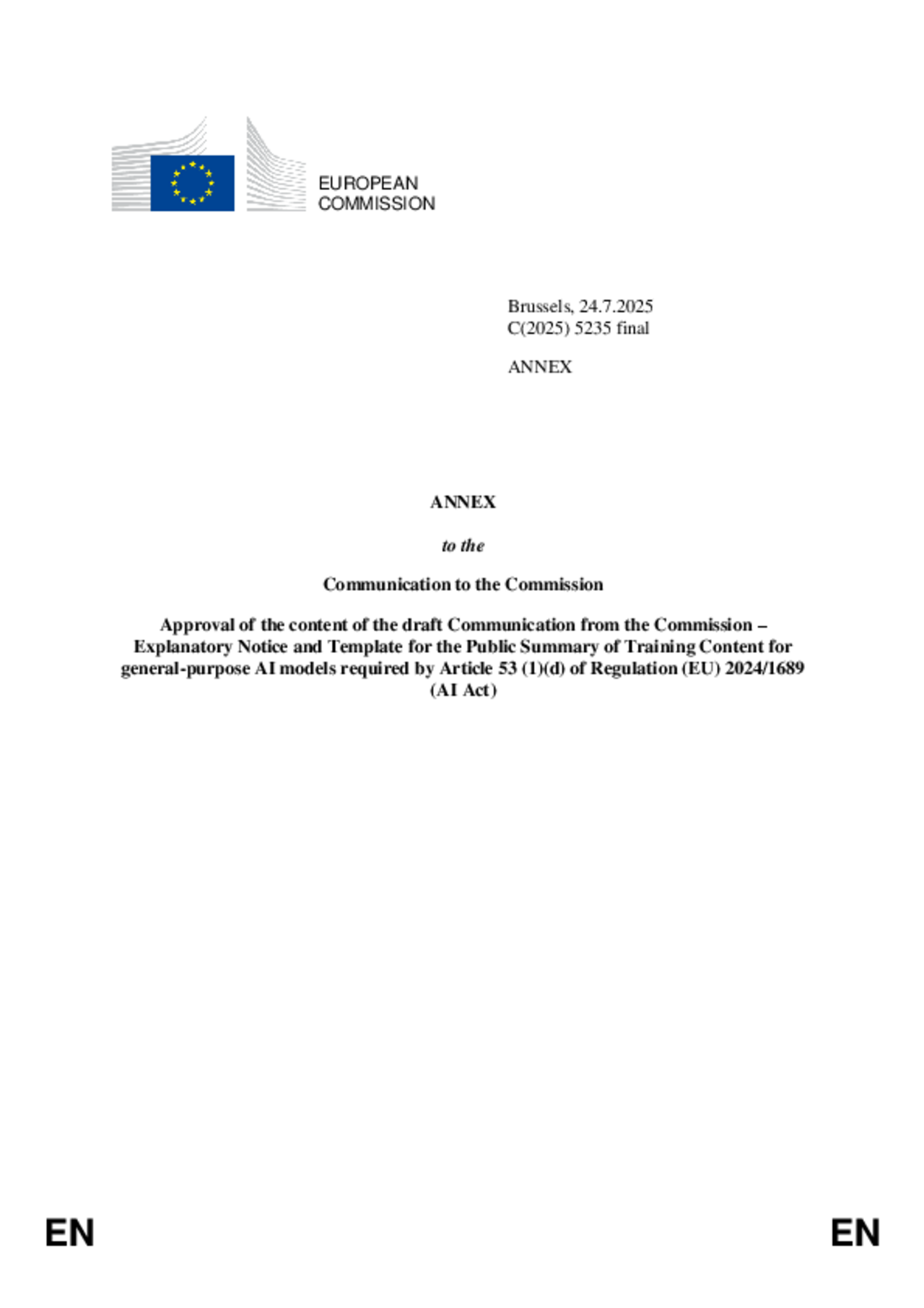European Commission Adopted Template for General-Purpose AI (GPAI) Model Providers to Summarise the Data Used to Train Their Model
As of July 24th, 2025, the European Commission adopted the template for GPAI model providers becoming mandatory for new models as of August 2nd, 2025. This template complements the Code of Practice, and related to the obligation of GPAI providers pursuant Art. 53.1 lit. d) AI Act.
Relation to the CoP for GPAI, Main Contents
The Template complements the CoP for GPAI. While the CoP for GPAI is considered a voluntary tool, the use of the Template is deemed mandatory. The CoP addresses providers' obligations pursuant Art. 53.1 lit c AI Act, whereas the Template addresses obligations pursuant Art. 53.1 lit d AI Act.
The Template mainly addresses three elements
- General Information
- List of Data Sources
- Relevant Data Processing Aspects
In respect of General Information, the template requires information to identify the provider and model, and information regarding modalities, the size of each modality within broad ranges, as well as general characteristics of the training data.
In respect of List of Data Sources, the template requires disclosure of the main datasets that were used to train the model, a comprehensive narrative of online data being scraped by on behalf of the provider, and for the sake of completeness a narrative description of all other data sources
In respect of Relevant Data Processing Aspects, the template requires disclosure of data processing aspects to enable parties with legitimate interests under Union law to exercise their due rights, e.g., in respect of copyright or removal of illegal content which otherwise might be reproduced and disseminated at scale. .
Balancing of Providers' Interests, Drafting Process, Reflection of needs of SME
The European Commission acknowledges the interests of providers and other parties involved, e.g., in respect trade secrets. Therefore, the template provides for different levels of details depending on the section, data sources, and potentially affected third party interests.
To ensure different interests will be heard and properly reflected, the Template was drafting in consultation of relevant stakeholders. Following a consultation via Have Your Say with way more than 400 responses, the stakeholder expert group involved in the drawing up of the CoP for GPAI was consulted on the first draft template post the Have Your Say consultation.
Alongside such business and private stakeholder involvement, the template was also shared with the AI Board and the European Parliament's (IMCO-LIBE Committees) working group on AI.
Against this background, the European Commission also claims that the Template is designed in a manner preventing unnecessary burdens for SME.
Legal Status, Consequence of Non-Compliance
Transparency obligations pursuant Art. 53.1 lit. d AI Act are mandatory. The European Commission states in their FAQ, that such transparency obligations may only be met if the Template is being used.
Even though such obligations will apply to new models by Aug 2nd, 2025 already, enforcement powers of the AI Office become effective with one year delay, i.e., Aug 2nd, 2026. Providers of existing models must comply with the template latest Aug 2nd, 2027.
If the AI Office will determine non-compliance with applicable transparency obligations pursuant Art. 53.1 lit. d, the European Commission highlights that such non-compliance may lead to fines of up to 3% of the provider's annual total worldwide turnover in the preceding financial year, or EUR 15,000,000, whichever is higher.
